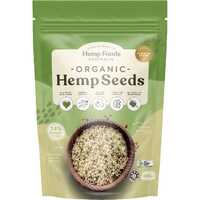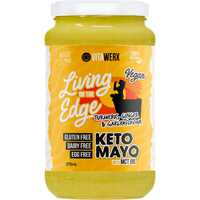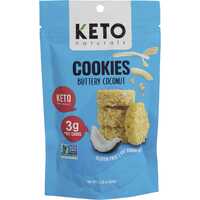The ketogenic diet, or keto diet, has become very popular over the last decade. People following this diet eat limited carbohydrates, moderate protein, and lots of fat to change how their body makes energy. Instead of generating energy from carbs, people enter a state called ketosis where energy comes from breaking down fat.
The ketogenic diet was initially developed in the 1920s to treat epilepsy in children, but it's been studied extensively for obesity management and other conditions. People across the world continue to embrace this diet in an effort to lose weight, boost energy levels, and lower the risk of developing certain diseases.
What is The Ketogenic Diet?
The ketogenic diet shifts the intake balance between the three macronutrients: protein, carbohydrates, and fat. People following this diet consume a very low amount of carbohydrates, replacing them with fats to change how the body generates energy.
It's all about ketosis
Ketosis is a metabolic state that occurs when your body burns fat for energy instead of glucose. Blood sugar or glucose is our primary energy source, and it mostly comes from breaking down carbohydrates. Many protein foods also contain glucose, including things like milk, yoghurt, lentils, and legumes. In order to enter ketosis, it's vital to limit your intake of starches, sugars, and other carbohydrates. When your glucose levels are low, your body breaks down fat and produces a compound called ketones. When you swap glucose for ketones as your main source of energy, you have successfully entered ketosis.
It's important to note, however, that not every low-carbohydrate diet causes ketosis. If you follow a more typical diet with low-carbohydrate intake and high-protein consumption, the body chooses to break down protein for energy instead. Up to 58% of amino acids are glucogenic, which prevents the occurrence of ketosis. Basically, the body chooses to use carbohydrates and proteins for energy production first, in that particular order. Unless you severely limit the former and consistently moderate the latter, your fat stores will go largely untouched.
Ketogenic Diet History and Recent Studies
As mentioned above, the ketogenic diet was developed in the 1920s to treat epilepsy in children. Previous treatment regimes used fasting to treat this condition, with a controlled ketogenic diet delivering similar results without the associated risks. While the use of this diet as a treatment for epilepsy was largely abandoned in favour of anticonvulsant drugs, it still has an important role in paediatric epilepsy management. This treatment had a revival in the 1990s, thanks in large part to an NBC TV program and subsequent TV movie starring Meryl Streep.
Ketosis has many additional benefits, however, including potential weight loss, increased energy, and lower risk levels for certain chronic illnesses. Recent studies into the ketogenic diet show promise for weight loss, diabetes, and metabolic syndrome, among other conditions. Many of the advantages linked to this diet are rather broad, which means they could affect a wide range of people and health scenarios. For example, the ketogenic diet and other low-carb diets have been found to reduce inflammation, improve epigenetic profiles, alter the microbiome, improve lipid profiles, supplement cancer treatments, improve brain function, and maybe even increase longevity.
Over recent years, the ketogenic diet has been studied extensively in relation to obesity. Obesity rates are growing across the Western world, and the ketogenic diet may be a possible treatment. Obesity is linked to diabetes and metabolic syndrome, with these conditions also increasing the risk of cardiovascular disease, stroke, and Alzheimer’s disease. Based on recently published clinical trials, this diet can be efficient for losing weight and changing body composition without causing severe adverse effects. The ketogenic diet has reached new levels of popularity in recent years, with people around the world using it to manage weight and improve general health outcomes.
Ketogenic Diet Variations
There are lots of versions of the ketogenic diet, along with related diets under other names. The following are among the most popular:
- Standard ketogenic diet - The standard keto diet has very limited carbs, together with moderate-protein and high-fat intake. It typically contains 70% fat, 20% protein, and a maximum of 10% carbohydrates.
- Therapeutic ketogenic diet - While both the standard and therapeutic keto diets limit carbohydrate intake, this diet reduces it even lower to around 5%. Protein intake is also severely limited in therapeutic scenarios, to 5% instead of 20%.
- Cyclical ketogenic diet - This diet involves alternating periods of low-carb intake with higher-carb periods. One popular version features 5 strict ketogenic days followed by 2 high-carb days.
- Targeted ketogenic diet - This variation of the ketogenic diet allows participants to add carbs around workouts. Carbs are often used to fuel exercise, with this diet helping people to maintain their regular fitness regimes.
- High-protein ketogenic diet - This diet is similar to a standard ketogenic diet, but it includes more protein and less fat. One typical ratio includes 60% fat, 35% protein, and 5% carbs.
- Paleo diet - The paleo diet focuses on protein, and it's not really a low-carb diet at all. While this diet is likely to remove grains and processed foods, strict low-carb ratios are not generally enforced.
- Atkins diet - This low-carb diet has four distinct phases, with carbohydrate content increased over time as weight goals are met. There are lots of variations out there, including the original Atkins 20 diet.
Popular Foods For The Ketogenic Diet
If you're interested in following the ketogenic diet, you need to pay strict attention to what you eat. Entering into ketosis doesn't happen automatically — you need to severely restrict your carbohydrate intake and augment your diet with lots of healthy fats. The ketogenic diet is a major shake-up for most people, as it changes the ratio between all three macronutrients.
The following foods are likely to play an important role:
Fish and seafood
Food from the sea plays a vital role in most ketogenic diets. Fish and shellfish are very keto-friendly, including salmon, sardines, mackerel, and other fatty fish. All of these foods are high in healthy omega-3 fats, which are great for cardiovascular health and weight management. Fish and seafood also contain lots of micronutrients, including B vitamins, potassium, and selenium. Carbohydrates are still present in some ocean-based foods, however, with oysters and octopus being two examples.
Red meat and poultry
Along with fish, red meats and poultry are included in most ketogenic diets. Chicken, lamb, beef, and other meats have their own nutritional value, but they're all 100% carb-free. While vegetarians can enter into ketosis without eating meat, lots of care is needed when selecting healthy meat alternatives. Low-carb tofu and tempeh products can play an important role, along with the other items mentioned in this list.
Low-carb veggies
When it comes to healthy eating, fresh vegetables are an absolute staple. Not all veggies are low-carb, however, so you need to choose carefully. Some of the best low-carb vegetables include asparagus, zucchini, eggplant, green beans, Brussels sprouts, and cauliflower. It's also important to avoid high-carb veggies, including starchy potatoes and corn and sweet-tasting beets and parsnips. Avocado deserves special mention, even if this low-carb, high-fat food is technically a fruit.
Cheese and dairy
Cheese and other dairy products can be enjoyed on the keto diet, including high-fat foods such as cream cheese, cream, and yoghurt. While cheese is often avoided by people trying to lose weight, it plays a central role in many keto diets. Cheese is high in saturated fat, and most cheeses are also very low in carbohydrates. Generally speaking, harder cheeses like Cheddar and Parmesan have the lowest carb count, and softer cheeses like ricotta have more carbs. If you love cheese, you're probably very happy about this inclusion.
Eggs
Eggs are a fantastic choice for anyone who wants to lower their carbs. This healthy protein source contains less than 1 gram of carbohydrates, and egg yolks also contain important antioxidants like lutein and zeaxanthin. Along with providing much-needed protein, eggs can be great for weight loss as they help to increase feelings of fullness. Eggs contain a huge range of beneficial vitamins and minerals, including the antioxidants vitamin A, vitamin E, and selenium.
Nuts and seeds
Whether you're looking for natural meal ingredients, a healthy breakfast, or a delicious on-the-go snack, you can't beat nuts and seeds. These nutritionally dense foods are high in fat and low in carbs, making them ideal for anyone following the ketogenic diet. Nuts and seeds are also naturally high in fibre, so they help you to feel satisfied without needing starchy foods. Hemp seeds are a great choice, as are almonds, macadamias, pecans, chia seeds, and flaxseeds.
At Healthy Being, we have lots of fantastic healthy foods to help you enter ketosis. We have an entire keto-friendly range, and all products are easy to browse for your convenience. From nuts and seeds to keto-friendly snacks and cereals, we're your trusted ketogenic health food supplier. Visit our website today and explore thousands of natural and organic products at unbeatable prices or contact our friendly team to learn more.


 Certified Organic
Certified Organic Vegan Friendly
Vegan Friendly  Vegetarian
Vegetarian Organic Ingredients
Organic Ingredients Dairy Free
Dairy Free Gluten Free
Gluten Free Keto Friendly
Keto Friendly


































